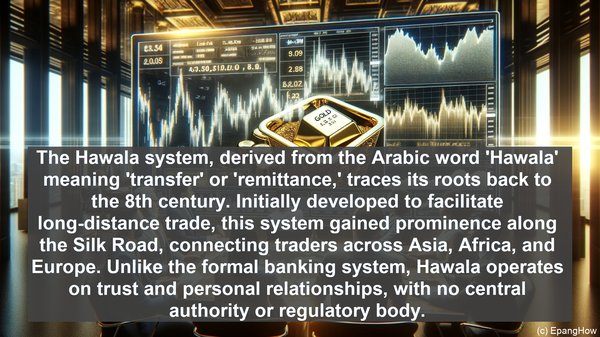Introduction: The World of Financial Systems
Greetings, financial enthusiasts! In today’s article, we embark on a journey to explore the diverse landscape of financial systems. Our focus? The Hawala system and the formal banking system. While both facilitate the movement of funds, they differ significantly in their structure, operations, and historical origins. So, let’s dive in!
The Hawala System: A Historical Perspective
The Hawala system, derived from the Arabic word ‘Hawala’ meaning ‘transfer’ or ‘remittance,’ traces its roots back to the 8th century. Initially developed to facilitate long-distance trade, this system gained prominence along the Silk Road, connecting traders across Asia, Africa, and Europe. Unlike the formal banking system, Hawala operates on trust and personal relationships, with no central authority or regulatory body.

Formal Banking System: The Pillar of Modern Finance
In contrast, the formal banking system, as we know it today, evolved over centuries. Its foundations can be traced back to ancient Mesopotamia, where temples served as secure repositories for valuables. Over time, banks emerged as institutions that not only safeguarded assets but also provided loans, facilitated trade, and contributed to economic growth. The formal banking system operates under strict regulations, with institutions governed by central banks and financial authorities.
Key Distinctions: Structure and Operations
One of the primary differences between the two systems lies in their structure. While the Hawala system is decentralized, relying on a network of trusted agents, the formal banking system is highly centralized, with a clear hierarchy of branches, headquarters, and regulatory bodies. Additionally, the Hawala system operates on a ‘ledger’ basis, with transactions recorded in a master register, whereas the formal banking system employs sophisticated digital infrastructure for record-keeping and transaction processing.

Regulatory Framework: Compliance and Challenges
The formal banking system operates within a robust regulatory framework, ensuring compliance with anti-money laundering (AML) and know your customer (KYC) regulations. In contrast, the Hawala system, due to its informal nature, often faces challenges in terms of transparency and regulatory oversight. While efforts have been made to regulate and monitor Hawala transactions, its inherent characteristics make it susceptible to misuse and illicit activities.
Global Significance: Hawala’s Role in Remittances
One area where the Hawala system has a significant impact is in the realm of remittances. For individuals in countries with limited access to formal banking services, Hawala provides a lifeline, enabling the transfer of funds across borders swiftly and efficiently. In fact, it is estimated that Hawala accounts for a substantial portion of global remittances, especially in regions with large diaspora populations.
